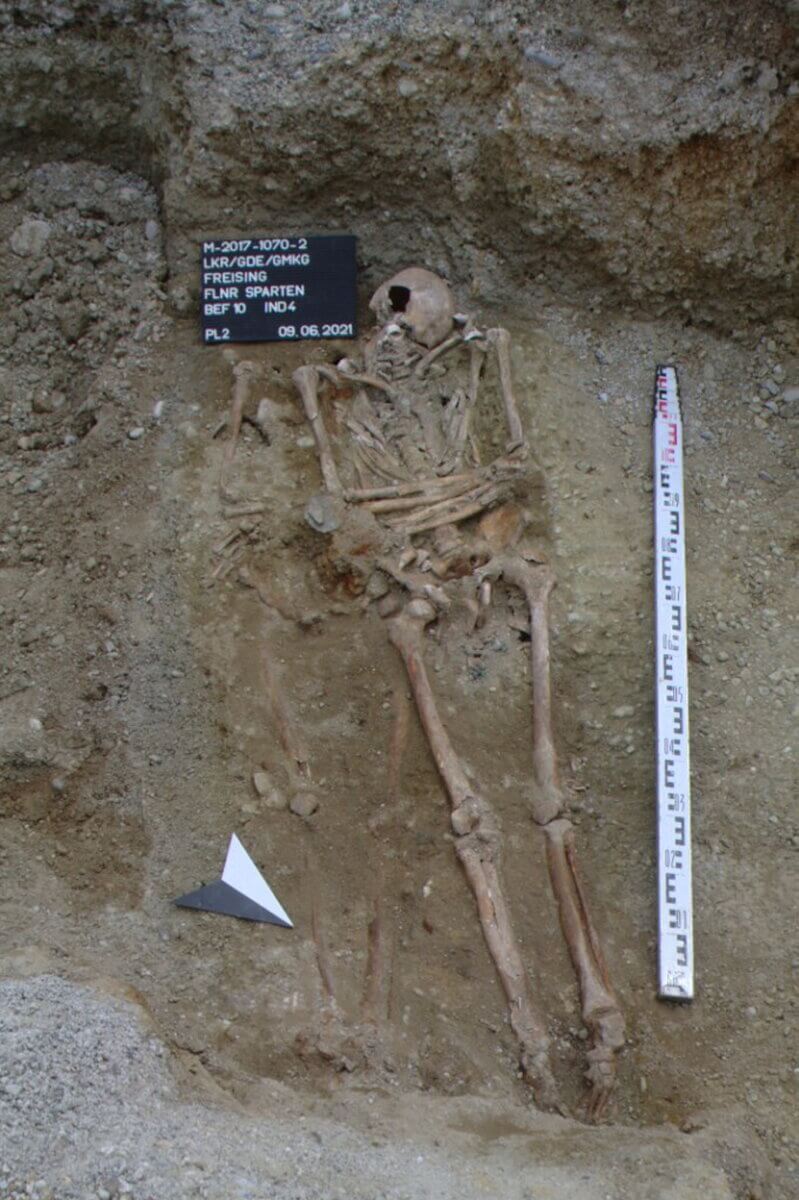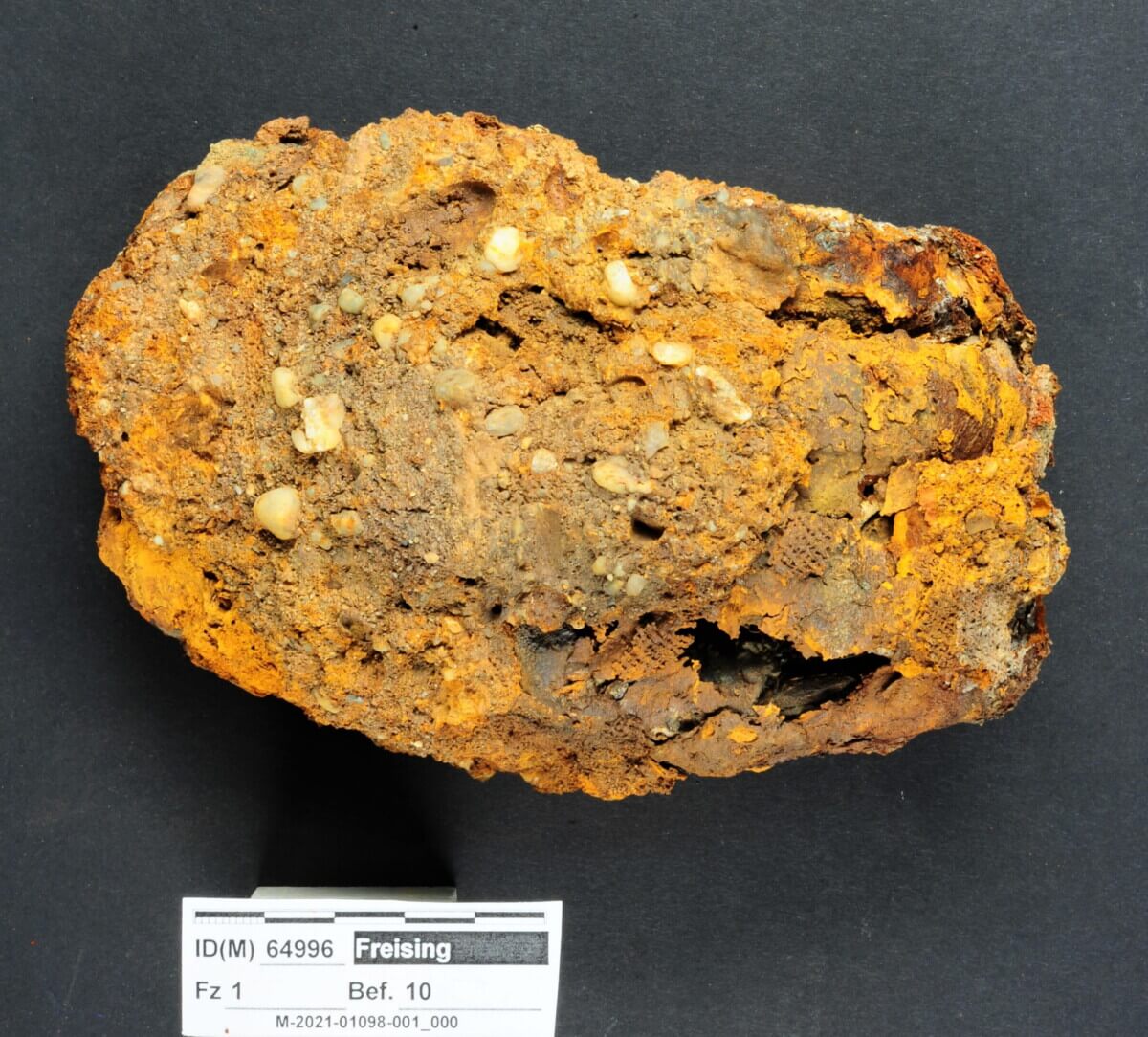
Archaeologists have uncovered a 400-year-old body with an iron hand. (Credit: SWNS)
FREISING, Germany — Were there advanced prosthetics in medieval times? Archaeologists have uncovered a 400-year-old body with an iron hand.
The medieval skeleton's prosthetic shows surprisingly advanced medical practices, according to researchers in Germany. A team discovered the remains during pipeline work in a grave near the Freising parish church of St. George in Bavaria. A radiocarbon dating of the skeleton revealed that the prosthesis wearer, likely a man between 30 and 50 years-old, must have died between 1450 and 1620.
“Even for experienced archaeologists, this find is something special: a skeleton with parts of the fingers of the left hand missing. Traces on the preserved bones indicate a possible amputation there. The remains of the hand are stuck in a sophisticated arrangement. The metal part reveals how advanced medicine was in the 15th century,” a Bavarian State Office for Monument Protection (BLfD) spokesperson explains in a media release, translated from German.

“The hollow hand prosthesis on the left hand added four fingers. The index, middle, ring, and little fingers are individually formed from sheet metal and are immobile. The finger replicas lie parallel to each other, slightly curved. Presumably, the prosthesis was made with straps on the stump of the hand tied up,” says Dr. Walter Irlinger, head of the Bavarian archaeological monument conservation department.
BLfD adds that Freising was the scene of military offensives on several occasions, for example, during the Thirty Years' War (1618-1648).
“This probably led to increased numbers of amputations and increased demand for prostheses,” officials note.

German officials believe that the most famous “Iron Hand” was worn by German knight Götz von Berlichinge, who lost his right hand at the wrist when cannon fire forced his sword against his limb in 1504, during the War of the Succession of Landshut.
“In contrast to the Freising iron hand, his prosthesis was movable and technically exceptionally complex,” the BLfD spokesperson notes.
You might also be interested in:
- Amazing archaeological finds dating back to 10,000 BC unearthed just 8 miles from Stonehenge
- Archaeologists reconstruct face of 7th century teen girl — one of England's first Christians
- Down bedding of the elite discovered in burial ground from the Iron Age
South West News Service writer Dean Murray contributed to this report.











Hail to the king, baby!
Shop smart; shop S-Mart
Was literally coming to say this!!!
The date on the placard claims this was discovered in 2021
I love archeology. These finds are great.
Jamie?
my thought too
Um, the date they estimate. is well within the Renaissance period.
guts berserk
Is that a second skeleton underneath it to the left?
I want to know who he was buried with...no mention of the second set of bones slightly beneath him.
Groovy!